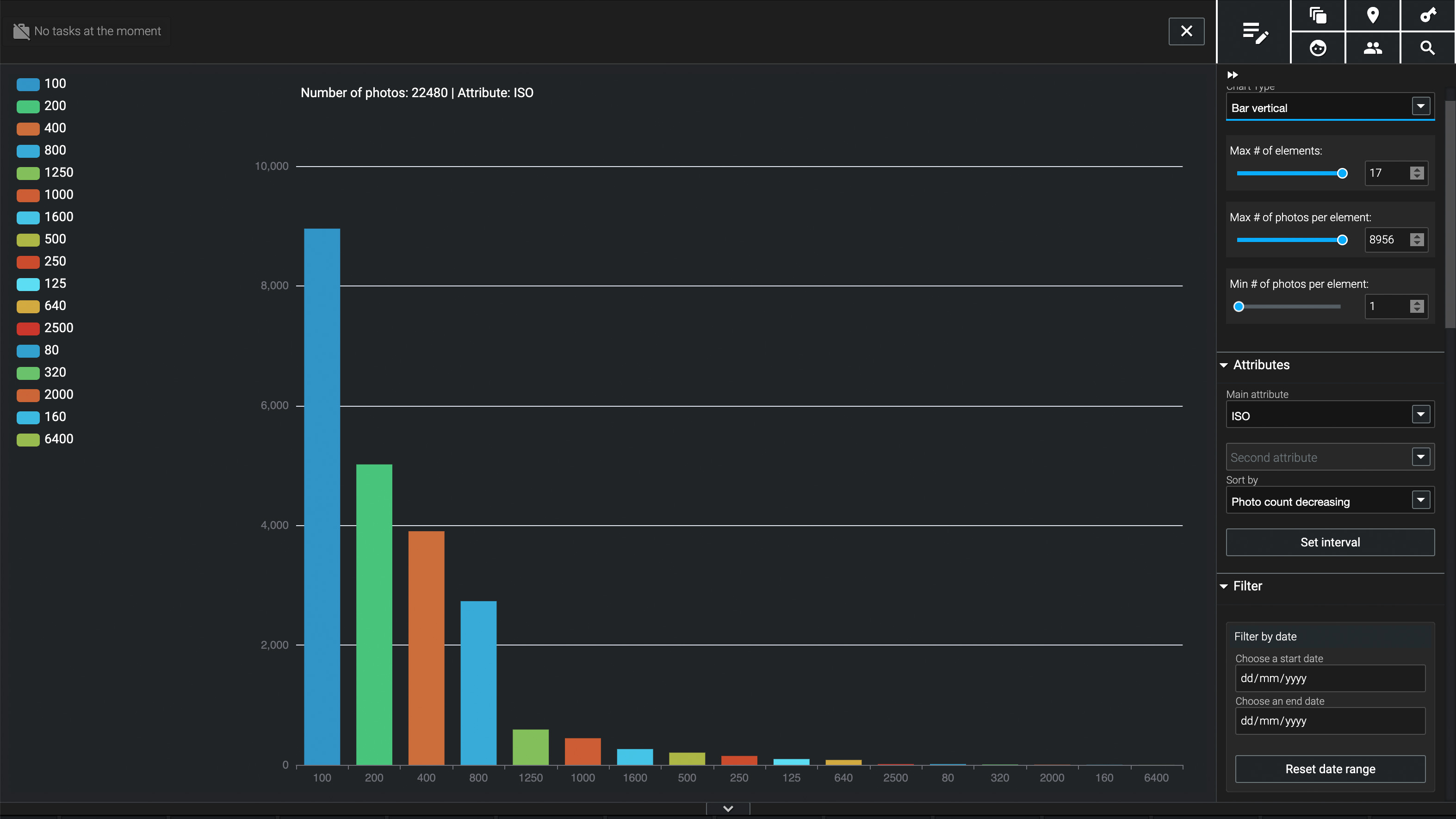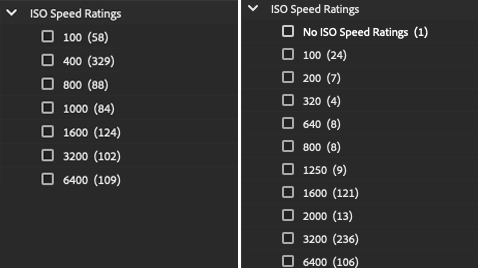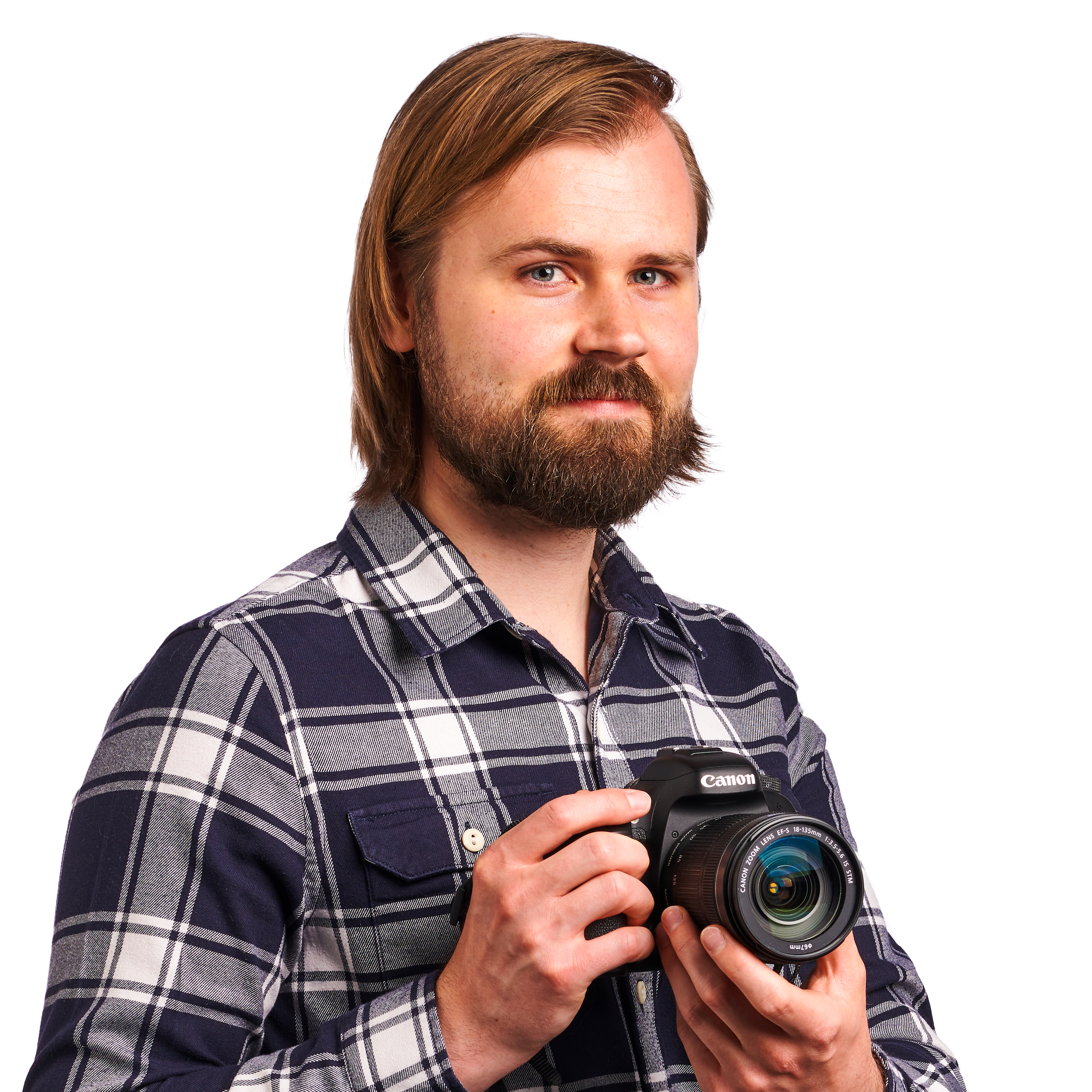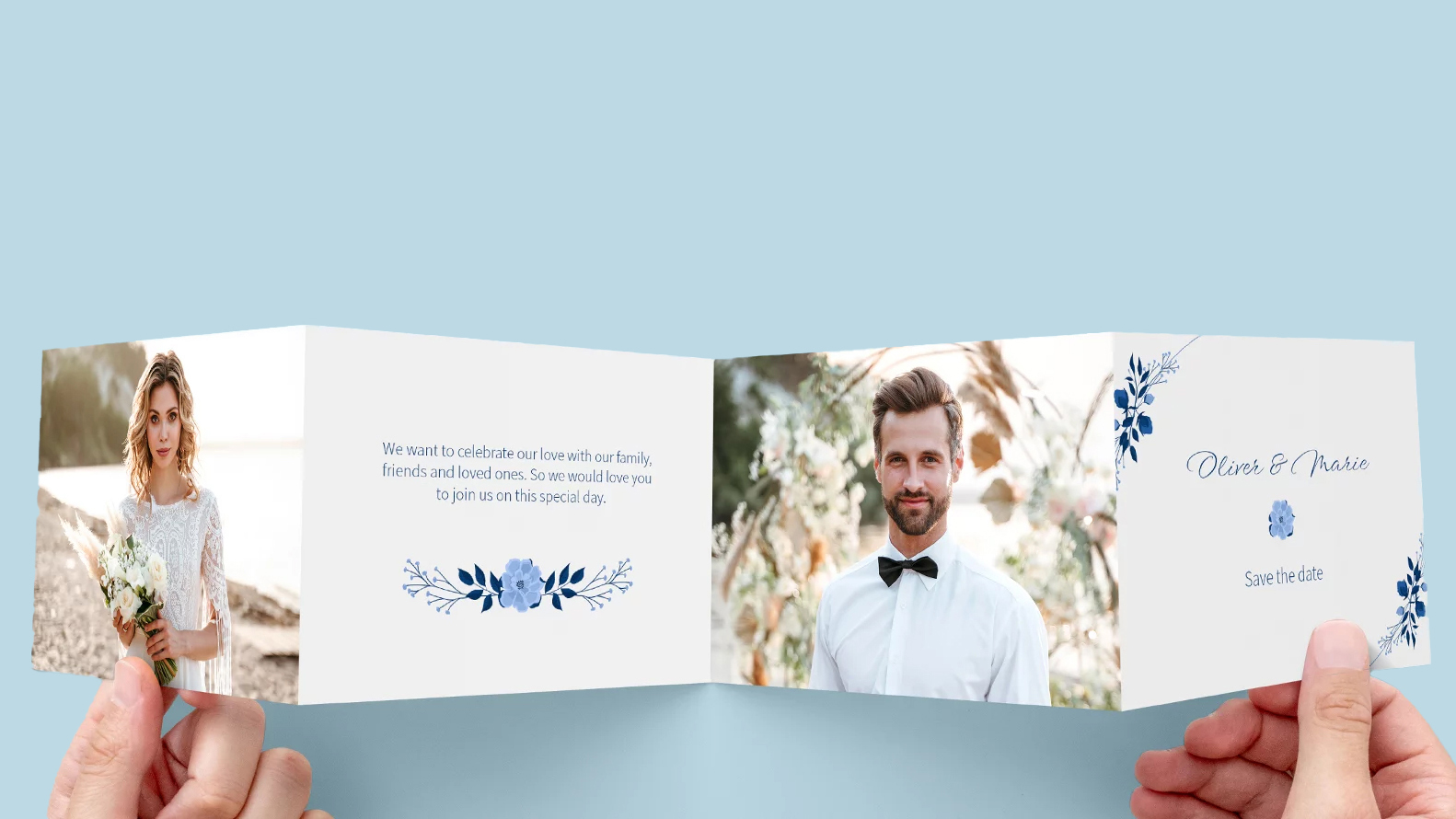
Whether I’m shooting professionally or just casually, I exclusively use aperture priority and manual modes – which means I can change my camera’s ISO.
This works a bit like the gain knob on a guitar amplifier. It makes the sensor more sensitive to light, but will introduce distortion – high ISOs mean a weaker signal and increased digital noise. Some liken this to film grain, though I try to avoid it where possible.
I recently reviewed Excire’s Foto 2025, which uses AI for image culling – its ability to pluck out people via face detection from thousands of images is nothing short of astounding. The software also has a useful analytics feature. Seeing your favorite focal lengths could help you make an informed decision over which lens to buy next.
I was more interested in seeing which ISOs I use. Bear in mind that the 22,000 images I uploaded into Excire were from a trip in 2016; I think my shooting style has changed, and my ISO values of choice have also shifted with the better low light performance of newer cameras.
My ISO of choice back in 2016 was my Nikon D800’s base ISO100, followed by 200, 400 and 800, after which there was a sharp drop-off – I was afraid to push the ISO any higher because I knew the low light limitations of my 2012 DSLR.
The lens analysis also showed I was shooting mostly with 20mm and 50mm lenses, both with super wide f/1.8 apertures, and in the super sunny countries I visited it’s no surprise I wanted to keep the ISO low to prevent overexposure.

Eights years on and my most-used ISO is now shared between 400 and 800. This of course depends on whether I’m shooting in the day or night; I’m not afraid to shoot at ISO6400 in total darkness with my Canon EOS R6 Mark II, as the low light performance is so good and I have the safety net of Photoshop’s AI-driven Denoise to clean up noisy pictures if needed.
Get the Digital Camera World Newsletter
The best camera deals, reviews, product advice, and unmissable photography news, direct to your inbox!
For cloudy or sunny conditions I’m mostly shooting at ISO400 these days. I find this ISO doesn’t negatively impact image quality in any discernible way that I can see without really zooming in, but it has the advantage of enabling shutter speeds four times faster than my base ISO, so it really helps prevent handheld camera shake and subject blur – which are much more noticeable defects.
If I’m shooting on a tripod then I’ll lower the ISO, of course, and if I’m shooting indoors or at night then I’ll bump it up. But for most situations it’s locked at around ISO400, and it’s not something I’m all too fussy with these days.
You may also like
If you enjoyed this article you may also like the best cameras for low light and what is triple-base ISO?

Deputy Editor on PhotoPlus: The Canon Magazine, Dan also brings his technical wizardry and editing skills to Digital Camera World. He has been writing about all aspects of photography for over 10 years, having previously served as technical writer and technical editor for Practical Photography magazine, as well as Photoshop editor on Digital Photo.
Dan is an Adobe-certified Photoshop guru, making him officially a beast at post-processing – so he’s the perfect person to share tips and tricks both in-camera and in post. Able to shoot all genres, Dan provides news, techniques and tutorials on everything from portraits and landscapes to macro and wildlife, helping photographers get the most out of their cameras, lenses, filters, lighting, tripods, and, of course, editing software.
You must confirm your public display name before commenting
Please logout and then login again, you will then be prompted to enter your display name.
